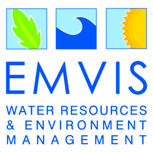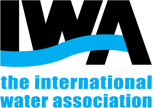Demand for water is rising steadily. The gap between global demand and current supply of freshwater is projected to reach 40 percent by 2030(1). By 2025, two-thirds of the world’s population could be living in severe water stress conditions(2).
Despite this situation, there are a number of tools e.g. improved technologies and improved use of data that can support and enable a wide range of water management solutions to address our increasingly complex and multidisciplinary water challenges.
Space technology can provide water utilities and other end user with essential environmental information to support better decision making. By using optical satellite data—in other words, sensors which record the wavelengths of light in the visible and near and mid infrared—it is possible to analyse water areas by their spectral characteristics. Satellite-based images can be used for near-real time water quality monitoring and customized to user needs they can provide important ongoing water quality information for drinking reservoirs.
EOMAP has developed a fully automated satellite-based Environmental Information System. It is the first fully operational multi-resolution processing tool providing users with easy online-access to water quality information for water quality monitoring and for responding to water quality threats for any location worldwide.
Within SPACE-O, EOMAP applies this technology for two reservoirs, Aposelemis on Crete and Mulargia in Italy. Satellite-based monitoring includes water quality parameters that are indicators for toxic cyanobacteria blooms, such as turbidity and chlorophyll-a concentrations. These parameters have weekly or almost daily sampling frequencies under cloud-free conditions. During the two-year-project, EOMAP has further improved and developed water quality parameters for inland basins including the trophic state index, the evaporation rate, a better bathymetric model and the separation of inorganic and organic matter.
Spatial resolutions from 30m to up to 2m pixel size allow monitoring of very small water bodies and ponds, and with a temporal frequency of almost daily measurements of the main water quality parameters. EOMAP uses its multi-sensor processing algorithm MIP with harmonized water quality data based on e.g. Sentinel-2A/B, Landsat 7/8, WorldView-2 or PlanetScope satellite data.
See this PowerPoint presentation for technical information and visualization of EOMAP technology deployed in the SPACE-O project:
Space-O_EOMAP_2018
(1) Addams, L., Boccaletti, G., Kerlin, M., & Stuchtey, M. (2009). Charting Our Water Future. Economic Frameworks to Inform Decision-¬‐Making. The 2030 Water Resources Group, McKinsey.
(2) United States Agency for International Development. (2011). Water and Development Strategy: 2013-¬‐2018.









